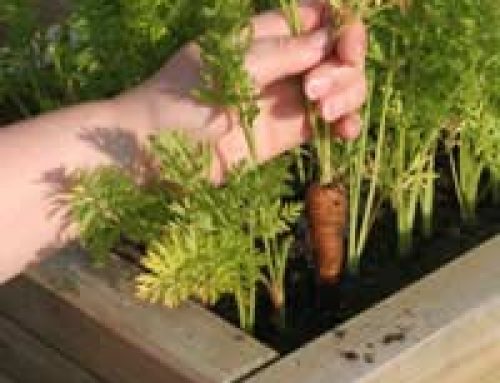
When you grow your own fruit and vegetables you will need to know how to store it to use beyond the growing season. This could be because all of your fruit becomes ripe all at the same time, or because you have a particularly good harvest, one year, or because you need to look ahead to provide food during the winter.
The best fruit to store are apples and pears. Some fruits don’t store so well and should be kept in the fridge for up to four weeks, or dried, or frozen.
General Storing Tips
Only store fruit and vegetables of the best quality. Fruit and veg with blemishes or wounds won’t store well, and could actually encourage the rest of he crop to go bad as well. Fruit and vegetables are best stored at a regular temperature, ideally between 3-7°C. They need plenty of ventilation, and store for longer if kept in the dark. Garden sheds, cellars or garages are ideal places to store your harvest.
Your crop should be stored in containers, which should allow air to circulate within it. A good example of a container is a crate that you can stack onto other crates. Other examples include slatted wooden shelves, orchard boxes and polystyrene trays. Many companies sell bespoke fruit storage containers for different types of fruit and vegetables.
Fruit and vegetables will often store better if wrapped before being stored. You can wrap your harvest in polythene bags (ensuring they are pierced and kept in low temperatures to prevent condensation). Tissue paper and newspaper also make good wrappers, especially for apples. Simply take a piece of newspaper or tissue paper and wrap it around the apple, and place it in a cool, ventilated container. Pears should not be wrapped before being stored.
However you store your harvest, you should check it regularly. One rotten apple can spoil the whole batch, so removing it quickly could save your crop. If you do find rotten fruit, it could be that ventilation is poor. If the fruit appears to be shrivelled, the temperature could be too high or the atmosphere too dry. Encourage humidity by damping down the floor occasionally, or store the crop in polythene bags.
Specific Requirements
Early season apples don’t store well, mid season apples can store for up to five weeks, and late season ones store for several months, and can taste better as a result. Wrap them individually in tissue paper or newspaper, and store them on slatted shelves, on fruit trays or in well-ventilated boxes.
Pears should be harvested just before they are ripe, when they are still firm. They can damage easily, so check them thoroughly for bruises before storing. Lay them in a single layer on slatted shelves or storage trays. They go off quicker than apples, so only store them for a few weeks. A week before you’re ready to eat them, move the pears into a warm area so they ripen up, and eat them within a few days.
Cut the leafy tops off beetroot and carrots and place them in a single layer without wrapping them (carrots can benefit from being covered by a layer of sand). Potatoes can be stored in hessian sacks. Harvest them on a dry day and leave them out in the sun to dry. Remove any mud from the potatoes to prevent mould forming on the skins. Store them in a dark place to avoid poisonous green patches forming, which make them inedible.
Onions, garlic and shallots are best plaited before storing and hung up to dry in a dry place, such as a shed. You can also cut the tops off and hang the bulbs in an old pair of tights or netting.
Plants in the squash family (such as pumpkins and courgettes) can last for up to three months if you store them correctly. Ensure they are in good condition and keep them in a cool dark place. Storing your harvest is a great way of dealing with gluts, and ensuring you have plenty to eat during the winter months.




Hi – using a dehydrator is another great way of storing fruit and vegetables after the growing season. It also reduces the amount of spaced required too!